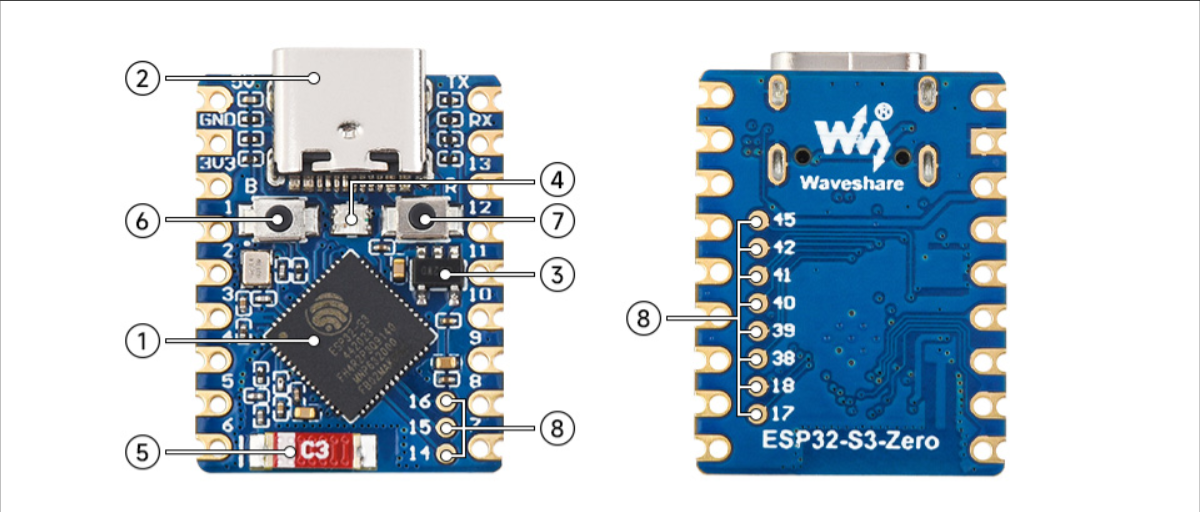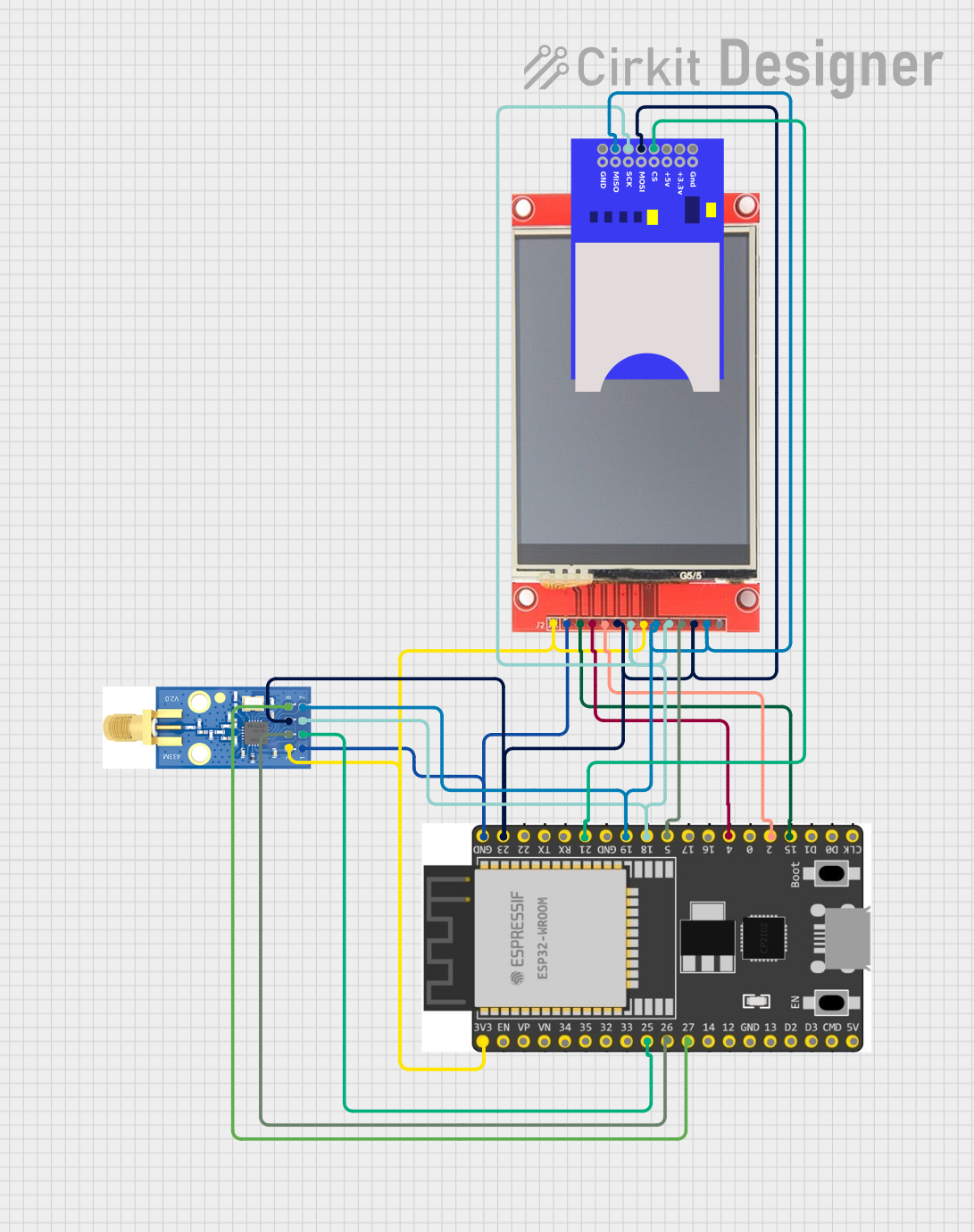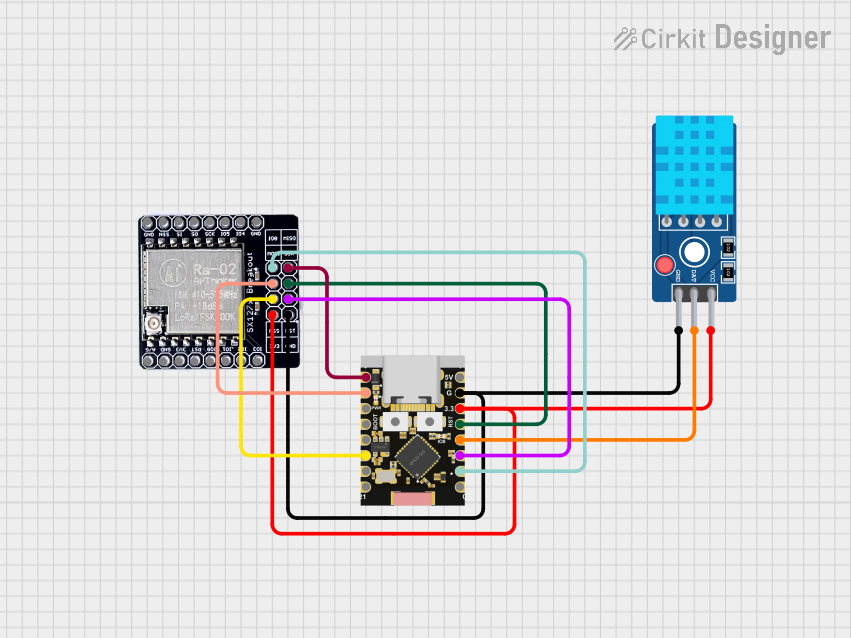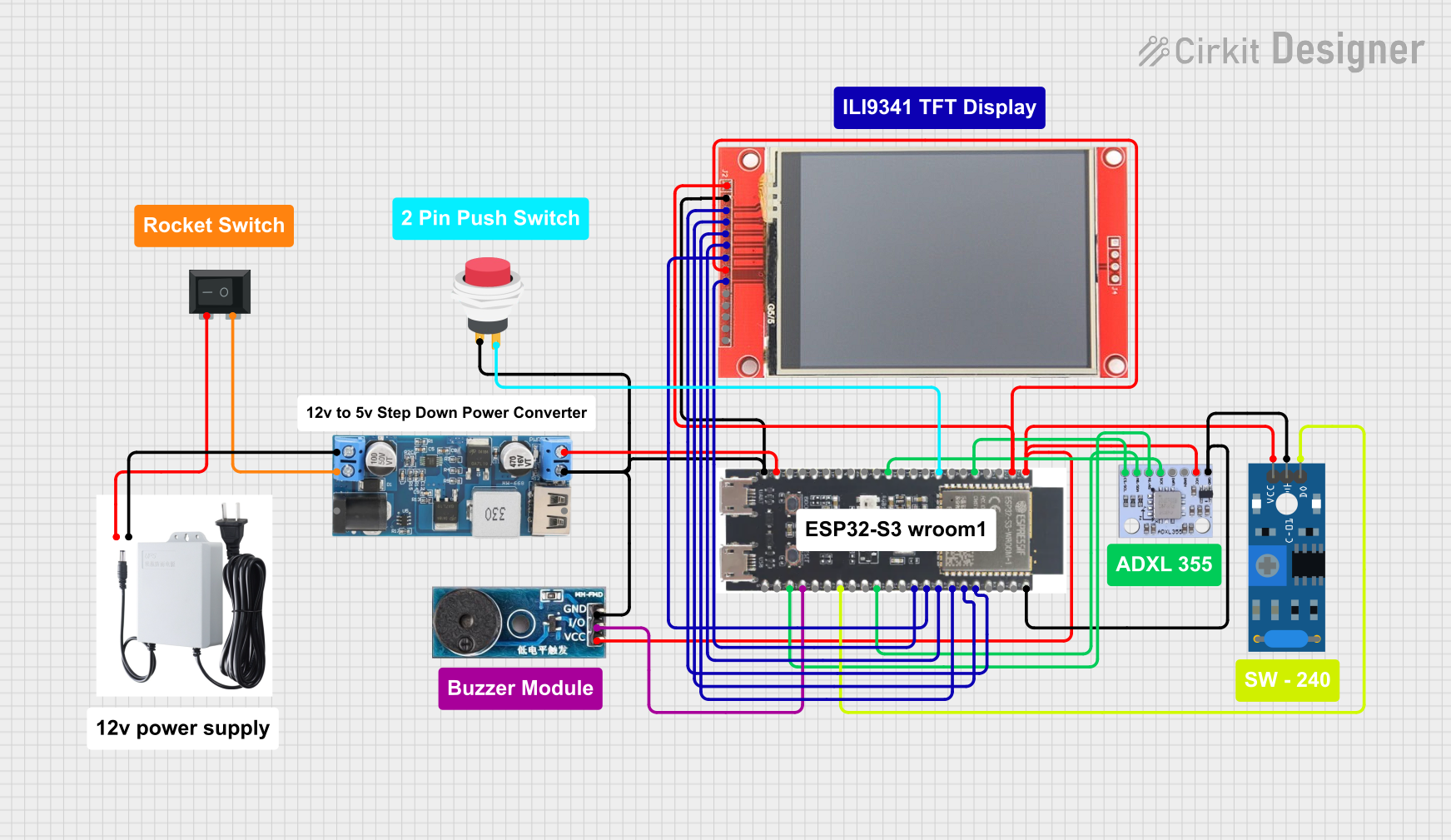
How to Use Waveshare ESP32-S3 Mini Development Board, Based on ESP32-S3FH4R2 Dual-Core Processor, 240MHz Running Frequency, 2.4GHz Wi-Fi & Bluetooth 5: Examples, Pinouts, and Specs

 Design with Waveshare ESP32-S3 Mini Development Board, Based on ESP32-S3FH4R2 Dual-Core Processor, 240MHz Running Frequency, 2.4GHz Wi-Fi & Bluetooth 5 in Cirkit Designer
Design with Waveshare ESP32-S3 Mini Development Board, Based on ESP32-S3FH4R2 Dual-Core Processor, 240MHz Running Frequency, 2.4GHz Wi-Fi & Bluetooth 5 in Cirkit DesignerIntroduction
The Waveshare ESP32-S3 Mini Development Board is a compact and versatile development platform based on the ESP32-S3FH4R2 dual-core processor. With a maximum clock speed of 240MHz, this board is designed for high-performance IoT applications. It supports 2.4GHz Wi-Fi and Bluetooth 5, enabling seamless wireless communication. Its small form factor and robust features make it ideal for smart home devices, wearable electronics, industrial automation, and other IoT projects.
Explore Projects Built with Waveshare ESP32-S3 Mini Development Board, Based on ESP32-S3FH4R2 Dual-Core Processor, 240MHz Running Frequency, 2.4GHz Wi-Fi & Bluetooth 5

 Open Project in Cirkit Designer
Open Project in Cirkit Designer
 Open Project in Cirkit Designer
Open Project in Cirkit Designer
 Open Project in Cirkit Designer
Open Project in Cirkit Designer
 Open Project in Cirkit Designer
Open Project in Cirkit DesignerExplore Projects Built with Waveshare ESP32-S3 Mini Development Board, Based on ESP32-S3FH4R2 Dual-Core Processor, 240MHz Running Frequency, 2.4GHz Wi-Fi & Bluetooth 5

 Open Project in Cirkit Designer
Open Project in Cirkit Designer
 Open Project in Cirkit Designer
Open Project in Cirkit Designer
 Open Project in Cirkit Designer
Open Project in Cirkit Designer
 Open Project in Cirkit Designer
Open Project in Cirkit DesignerCommon Applications and Use Cases
- Smart home automation systems
- Wearable devices
- Industrial IoT (IIoT) applications
- Wireless sensor networks
- Prototyping for AI and machine learning at the edge
- Bluetooth-enabled devices
Technical Specifications
Key Technical Details
- Processor: ESP32-S3FH4R2 dual-core processor
- Clock Speed: Up to 240MHz
- Wireless Connectivity: 2.4GHz Wi-Fi and Bluetooth 5
- Flash Memory: 4MB
- SRAM: 512KB
- GPIO Pins: 27 (multipurpose)
- Operating Voltage: 3.3V
- Power Supply: USB Type-C (5V input)
- Dimensions: 51mm x 25.4mm
- Operating Temperature: -40°C to 85°C
Pin Configuration and Descriptions
The Waveshare ESP32-S3 Mini Development Board features a 2x15 pin header layout. Below is the pin configuration:
| Pin | Name | Description |
|---|---|---|
| 1 | 3V3 | 3.3V power output |
| 2 | GND | Ground |
| 3 | IO0 | GPIO0, can be used for input/output or boot mode selection |
| 4 | IO1 | GPIO1, general-purpose input/output |
| 5 | IO2 | GPIO2, general-purpose input/output |
| 6 | IO3 | GPIO3, general-purpose input/output |
| 7 | IO4 | GPIO4, general-purpose input/output |
| 8 | IO5 | GPIO5, general-purpose input/output |
| 9 | IO12 | GPIO12, general-purpose input/output |
| 10 | IO13 | GPIO13, general-purpose input/output |
| 11 | IO14 | GPIO14, general-purpose input/output |
| 12 | IO15 | GPIO15, general-purpose input/output |
| 13 | IO16 | GPIO16, general-purpose input/output |
| 14 | IO17 | GPIO17, general-purpose input/output |
| 15 | EN | Enable pin, used to reset the board |
| 16 | USB_DM | USB D- signal |
| 17 | USB_DP | USB D+ signal |
| 18 | IO18 | GPIO18, general-purpose input/output |
| 19 | IO19 | GPIO19, general-purpose input/output |
| 20 | IO20 | GPIO20, general-purpose input/output |
| 21 | IO21 | GPIO21, general-purpose input/output |
| 22 | IO22 | GPIO22, general-purpose input/output |
| 23 | IO23 | GPIO23, general-purpose input/output |
| 24 | IO24 | GPIO24, general-purpose input/output |
| 25 | IO25 | GPIO25, general-purpose input/output |
| 26 | IO26 | GPIO26, general-purpose input/output |
| 27 | IO27 | GPIO27, general-purpose input/output |
| 28 | GND | Ground |
| 29 | 5V | 5V power input |
| 30 | VIN | Voltage input (external power supply) |
Usage Instructions
How to Use the Component in a Circuit
- Powering the Board: Connect the board to a USB Type-C cable for power and programming. Ensure the power source provides 5V.
- Programming: Use the Arduino IDE, ESP-IDF, or other compatible development environments to program the board. Install the necessary ESP32-S3 board support package.
- Connecting Peripherals: Use the GPIO pins to connect sensors, actuators, or other peripherals. Ensure the voltage levels are compatible (3.3V logic).
- Wireless Communication: Configure the Wi-Fi and Bluetooth settings in your code to enable wireless communication.
Important Considerations and Best Practices
- Voltage Levels: The GPIO pins operate at 3.3V. Avoid connecting 5V signals directly to the pins to prevent damage.
- Boot Mode: To enter boot mode, hold the IO0 pin low while resetting the board.
- Power Supply: If using an external power supply, ensure it provides a stable 5V input to the VIN pin.
- Heat Management: While the board is designed to operate in a wide temperature range, ensure proper ventilation for high-performance applications.
Example Code for Arduino UNO Integration
Below is an example of how to use the Waveshare ESP32-S3 Mini Development Board to connect to a Wi-Fi network and blink an LED:
#include <WiFi.h> // Include the Wi-Fi library
// Replace with your network credentials
const char* ssid = "Your_SSID";
const char* password = "Your_PASSWORD";
const int ledPin = 2; // GPIO2 is connected to the onboard LED
void setup() {
pinMode(ledPin, OUTPUT); // Set the LED pin as an output
Serial.begin(115200); // Start the serial communication
// Connect to Wi-Fi
Serial.print("Connecting to Wi-Fi");
WiFi.begin(ssid, password);
while (WiFi.status() != WL_CONNECTED) {
delay(500);
Serial.print(".");
}
Serial.println("\nWi-Fi connected!");
}
void loop() {
digitalWrite(ledPin, HIGH); // Turn the LED on
delay(1000); // Wait for 1 second
digitalWrite(ledPin, LOW); // Turn the LED off
delay(1000); // Wait for 1 second
}
Troubleshooting and FAQs
Common Issues Users Might Face
Board Not Detected by Computer:
- Ensure the USB cable is functional and supports data transfer.
- Verify that the correct drivers for the ESP32-S3 are installed on your computer.
Wi-Fi Connection Fails:
- Double-check the SSID and password in your code.
- Ensure the Wi-Fi network is within range and operational.
GPIO Pin Not Responding:
- Confirm that the pin is not being used for another function (e.g., boot mode).
- Check for loose or incorrect connections in your circuit.
Board Not Entering Boot Mode:
- Ensure the IO0 pin is held low while resetting the board.
Solutions and Tips for Troubleshooting
- Use a multimeter to verify power supply voltages.
- Check the serial monitor for error messages during programming.
- Update the ESP32-S3 board support package in your development environment to the latest version.
- Refer to the Waveshare documentation for additional technical details and support.